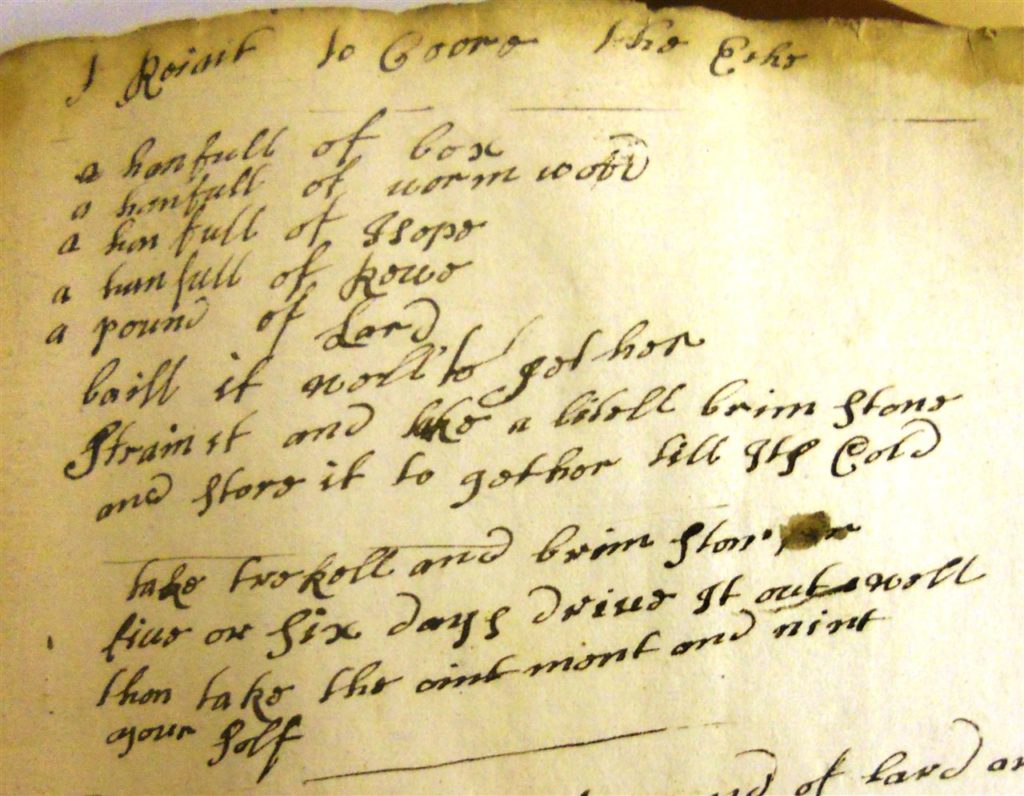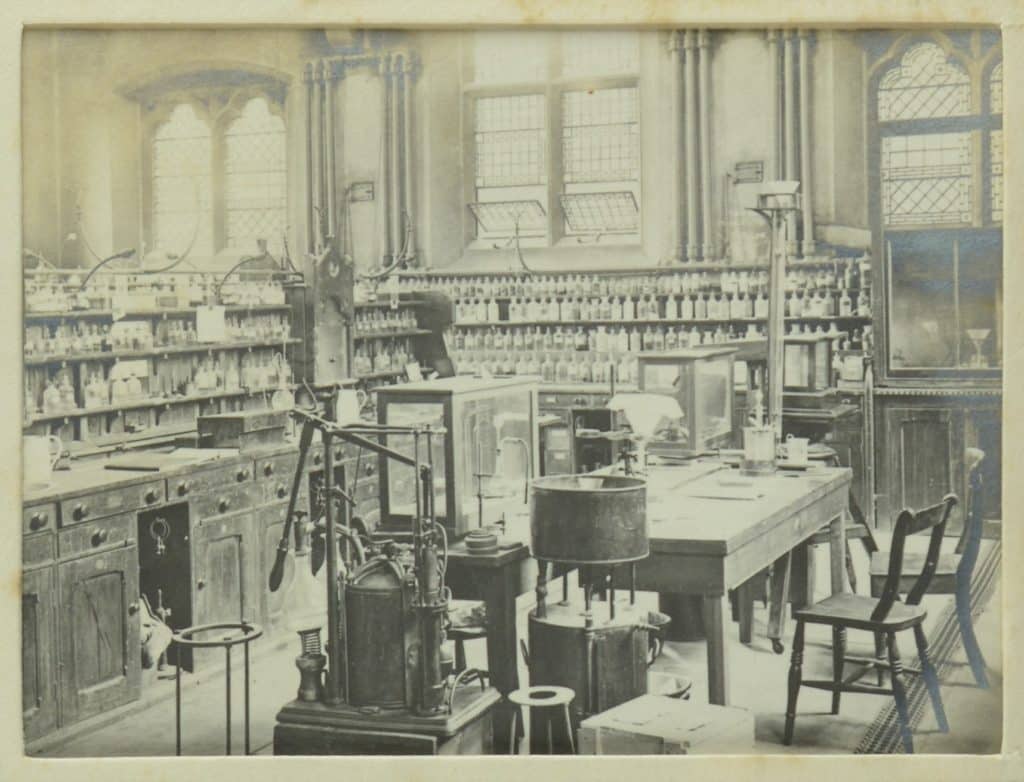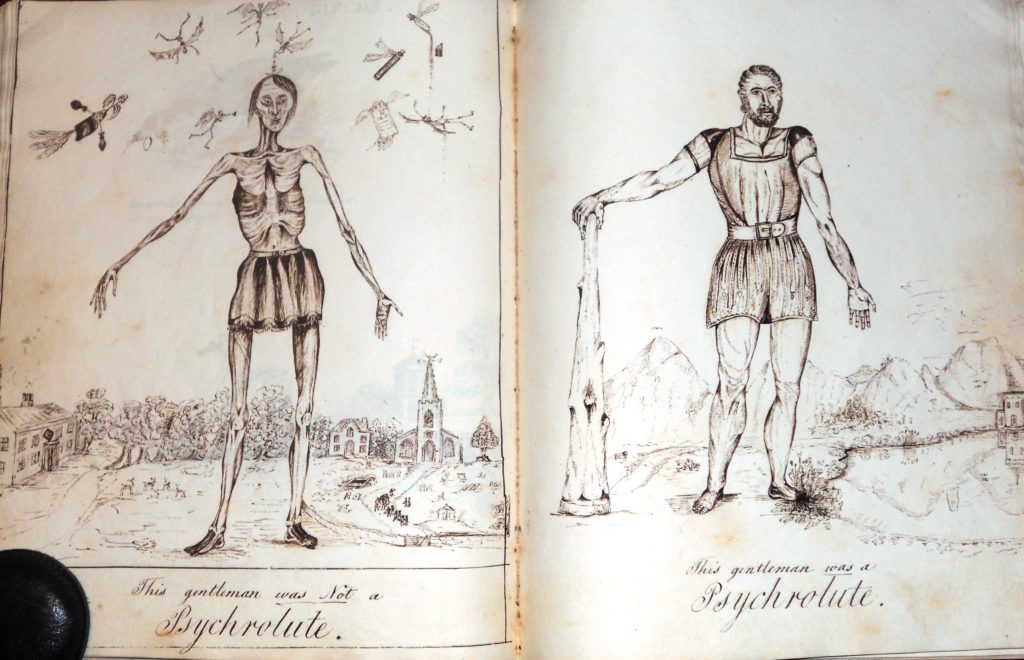From a book held in the College Archives [COLL EST HL 1], dated 1693, a recipe for aches and pains:
A reicut to Coore the Eche [A recipe to cure the ache]
A hanfull of box
A hanfull of wormwood
A hanfull of Isope [hissop]
A hanfull of Rewe [rue]
A pound of Lard
Boill it woll to gether
Strain it and take a litell brim stone
and store it to gether till its cold
take trekell [treacle] and brim stone
for five or six days drive it out well,
then take the ointment and nint your
self

Brimstone, a form of sulphur, and treacle or molasses were commonly used as a cure-all at a time when medicine was not readily available to the masses. Charles Dickens mentions its use in Nicholas Nickleby, showing that even 150 years after this recipe was written its popularity had not decreased. It is the threat of this treatment that makes Michael and Jane Banks write their definition of a good nanny in Mary Poppins, when their father’s choice and former nanny says “Brimstone and Treacle and codliver oil, liberal doses of each. These are the treats from which children recoil, the lessons I’m going to teach”.
The benefits of sulphur as an anti-oxidant and detox agent have been known for thousands of years. Part of the popularity of spas was the sulphurous content of the water, and modern day diets such as the cabbage soup diet are based on these properties. It has been used to cure skin complaints, as a laxative, and as here, to relieve aching joints.
By Eleanor Hoare, College Archivist



